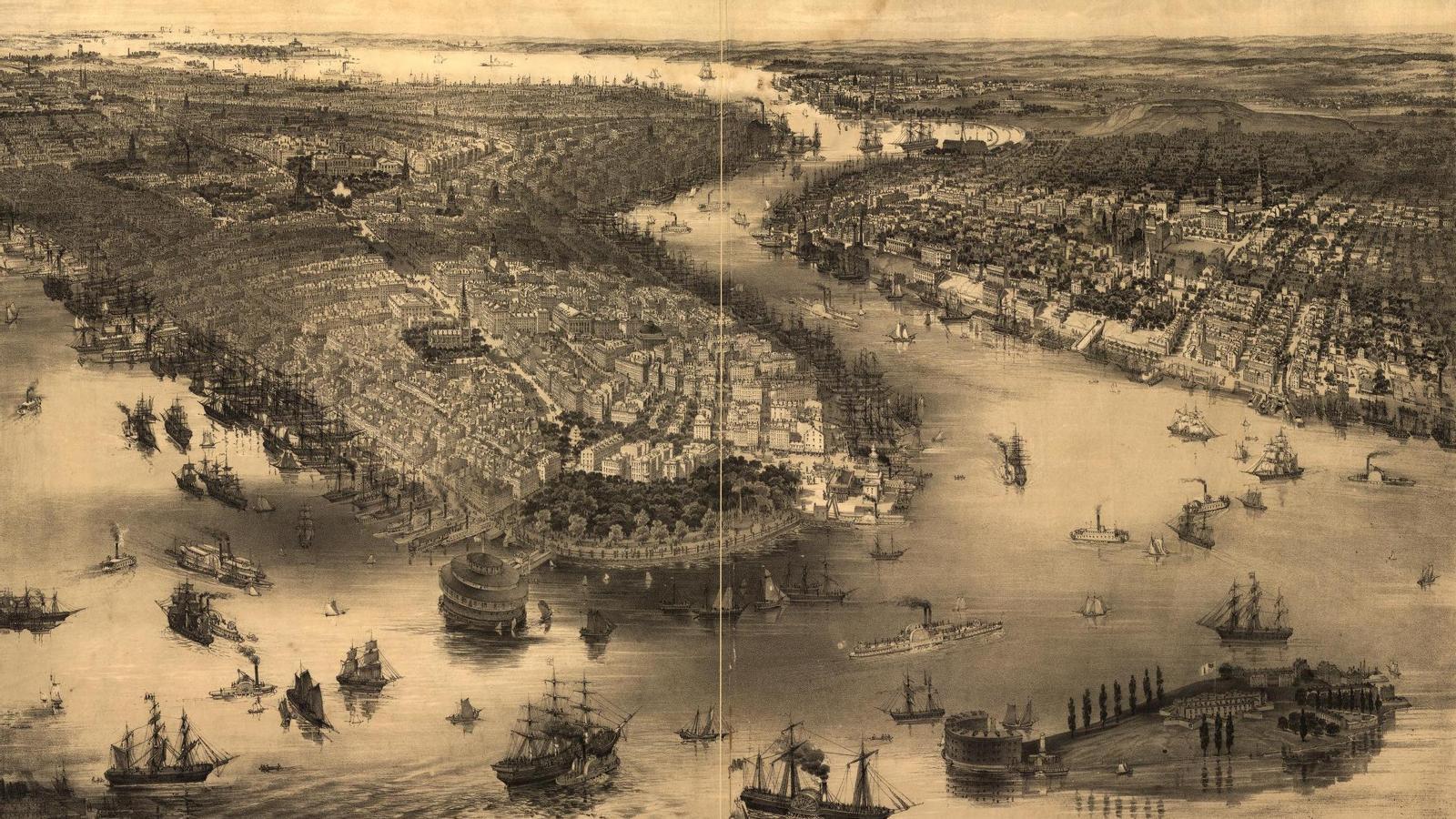The photograph shows the torch and part of the Statue of Liberty's arm, displayed at the 1876 Philadelphia Centennial Exposition. Stereographic photographs consist of two nearly identical photographs, paired to produce the illusion of a single, three-dimensional image, usually when viewed. The Library of Congress contains such images from the 1850s through the 1920s.
Snapshots of one of the largest libraries in the world
We dive into the Library of Congress of the United States of America


BarcelonaFounded in 1800, the Library of Congress houses more than 178 million documents, including photographs. These unique collections depict the country's living conditions and traditions.
A dock worker in Oswego, New York, is photographed by Marjory Collins for an Office of War Information publication in 1944.
Aerial view of New York City and Brooklyn with Battery Park and Governors Island in the foreground, 1851
Dock workers loading crates of fish onto trucks for shipment to New York retailers, in a May 1943 photograph.
Workers cutting metal pipes to install new water, gas, and sewage systems in a New York neighborhood.
One of the 400 photographs taken during the sound recording expeditions conducted by John Avery Lomax, Alan Lomax, and Ruby Terrill Lomax, between 1934 and approximately 1950 for the Folk Song Archive. In this archive, they documented American folk music to create an archive. The photographs, which they also made, depict African American, Mexican American, and white musicians, singers, and dancers, primarily in the American South (Alabama, Arkansas, Florida, Georgia, Louisiana, Mississippi, North Carolina, Texas, and Virginia) and the Bahamas (Nassau, Andros Island). In addition to the portraits, the images show musicians performing in a variety of settings: at home, in concert, and while performing outdoor prison labor.
Working as a research photographer for the National Child Labor Committee (NCLC), Lewis Hine documented the working and living conditions of children in the United States between 1908 and 1924. NCLC photographs are useful for the study of labor, reform movements, children, working-class families, industrial and agricultural education, and other aspects of urban and rural life in early 20th-century America. The collection consists of over 5,100 photographic prints and 355 glass negatives, donated to the Library of Congress, along with NCLC records, in 1954 by Mrs. Gertrude Folks Zimand, acting for the NCLC in her capacity as executive director.
The National Photo Company's extraordinary collection documents virtually every aspect of life in Washington, D.C., during the administrations of Presidents Wilson, Harding, Coolidge, and Hoover. It produced photo sets on popular subjects and special photographic commissions for local businesses and government agencies. The images date from approximately 1850 to 1945; the majority were created between 1909 and 1932. The National Photo Company's photographic archives, which include approximately 80,000 images, were acquired by the Herbert E. French Library in 1947.
